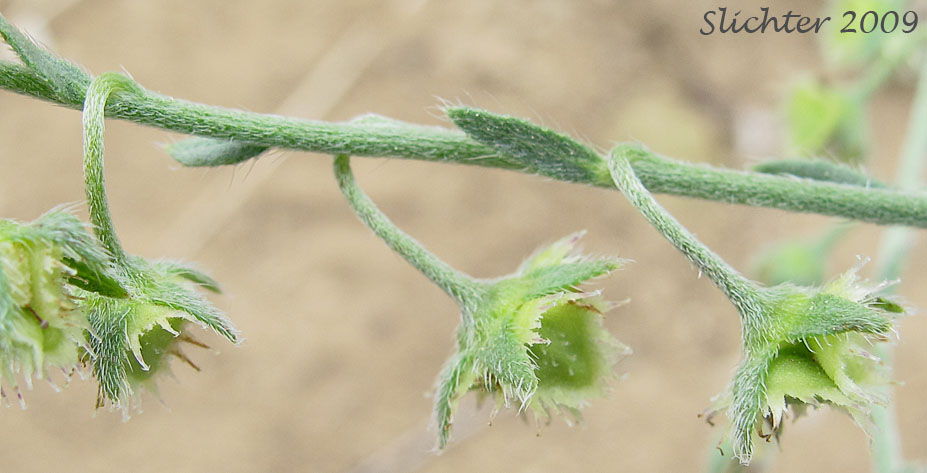
Sagebrush stickseed is a perennial wildflower with one to several stems arising from 20-80 cm tall. The stems are covered with many soft, spreading hairs with some appressed, downward pointing hairs on the lower stem and some appressed hairs on the upper stems pointed to the apex of the plant. The basal leaves are well developed, petiolate, with linear blades from 5-20 cm long and 2-10 mm wide. The stem leaves are also linear in shape, sessile or somewhat clasping at the base, becoming reduced in size upwards up the stem.
The inflorescence consists of numerous scorpioid, one-sided spikes on short branches on the upper stem. The flowers are white with a yellow eye.. The tube is short with 5 spreading lobes at the mouth of the flower, which is 6-12 mm wide across its diameter from lobe tip to lobe tip.
Sagebrush Stickseed: Hackelia diffusa var. arida - Flowers white with yellow eye. Leaves generally less than 1 cm wide. Hairs on the stem usually appressed to somewhat spreading. Plants of dry slopes with sagebrush or ponderosa pine. Plants of central Washington, found amongst sagebrush or in yellow pine woodlands.
Cotton's Stickseed: Hackelia diffusa var. cottonii - Leaves generally greater than 1 cm wide. Hairs on the middle and lower stems spreading. Plants of talus and rocky cliffs along the Columbia River.
Spreading Stickseed: Hackelia diffusa var. diffusa - Flowers white or sometimes blue with yellow eye. Leaves generally greater than 1 cm wide. Hairs on the middle and lower stems spreading. Plants of talus and rocky cliffs along the Columbia River.
Sagebrush stickseed may be found ondry, open to lightly wooded slopes. It is often found with sagebrush or ponderosa pine.
Sagebrush stickseed may be found east of the Cascade Mts. in Chelan, Douglas, Grant, Kittitas and Yakima counties in central Oregon.